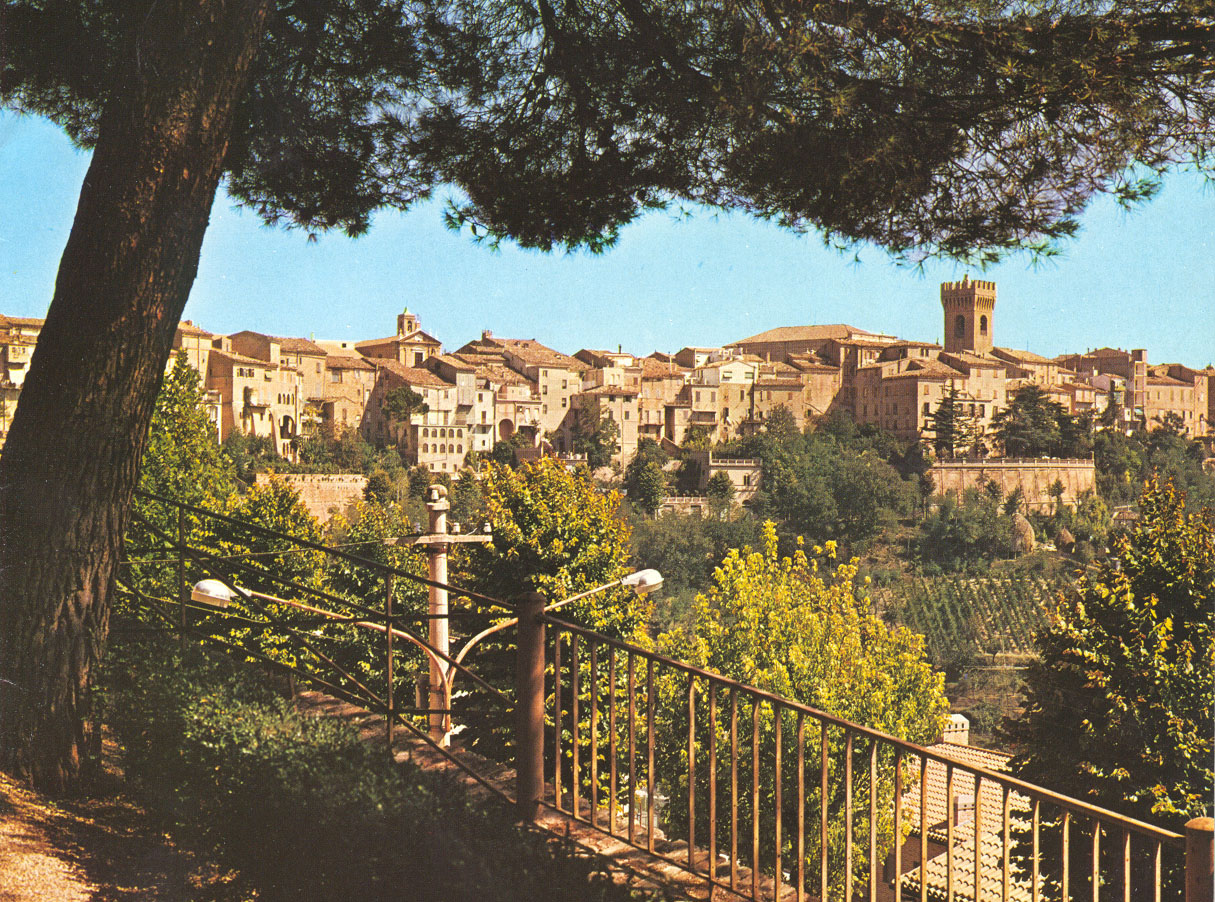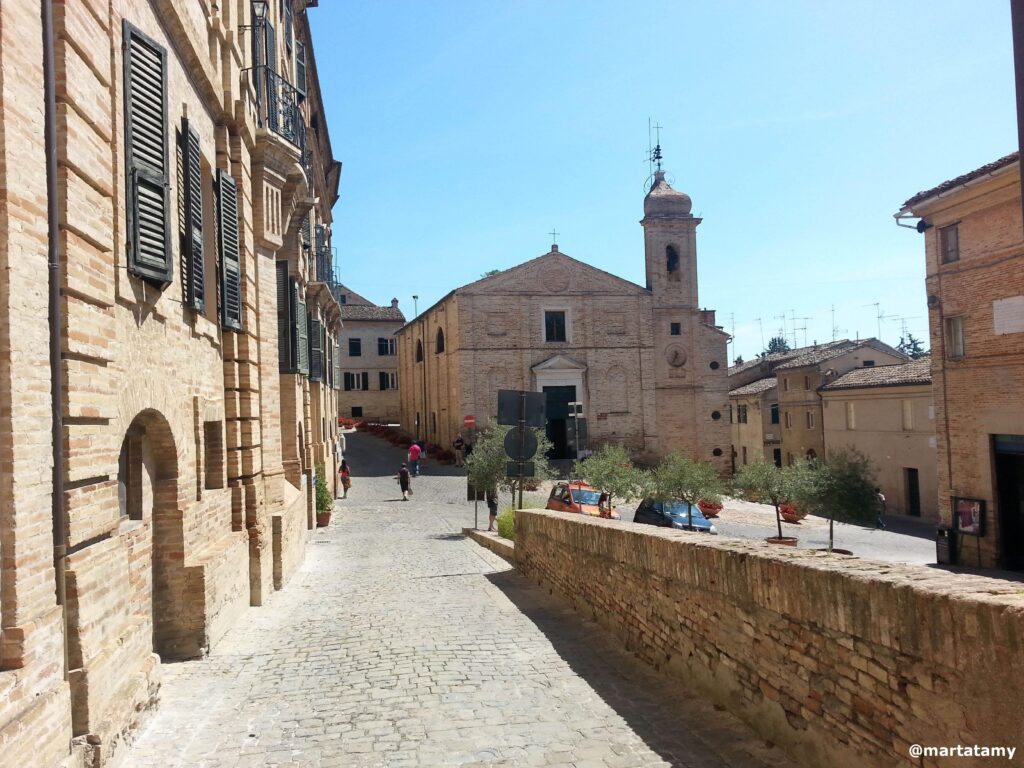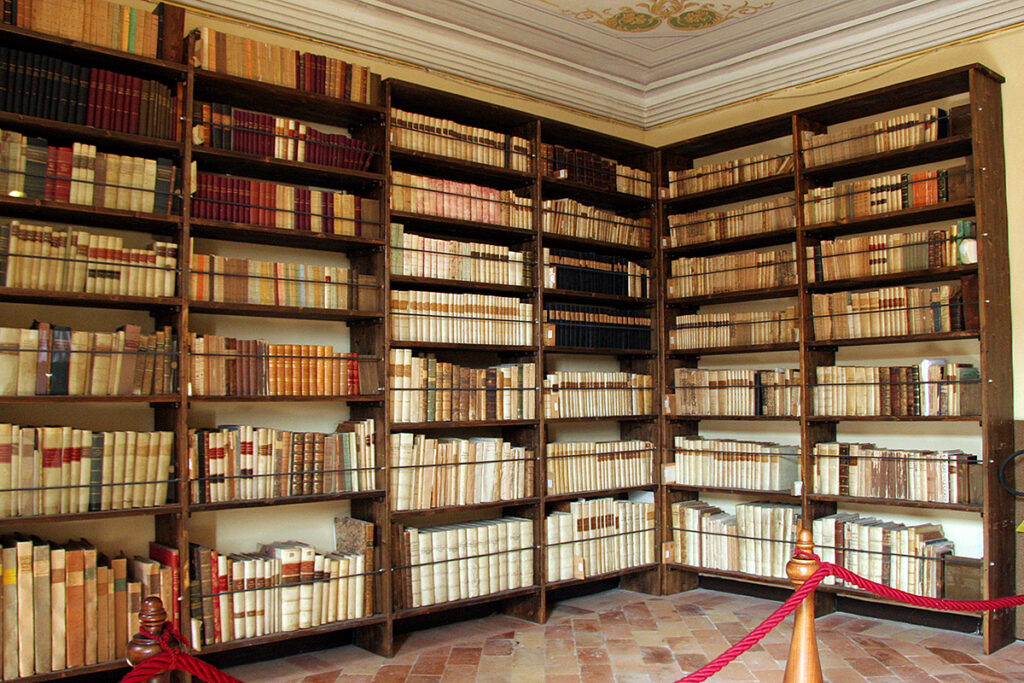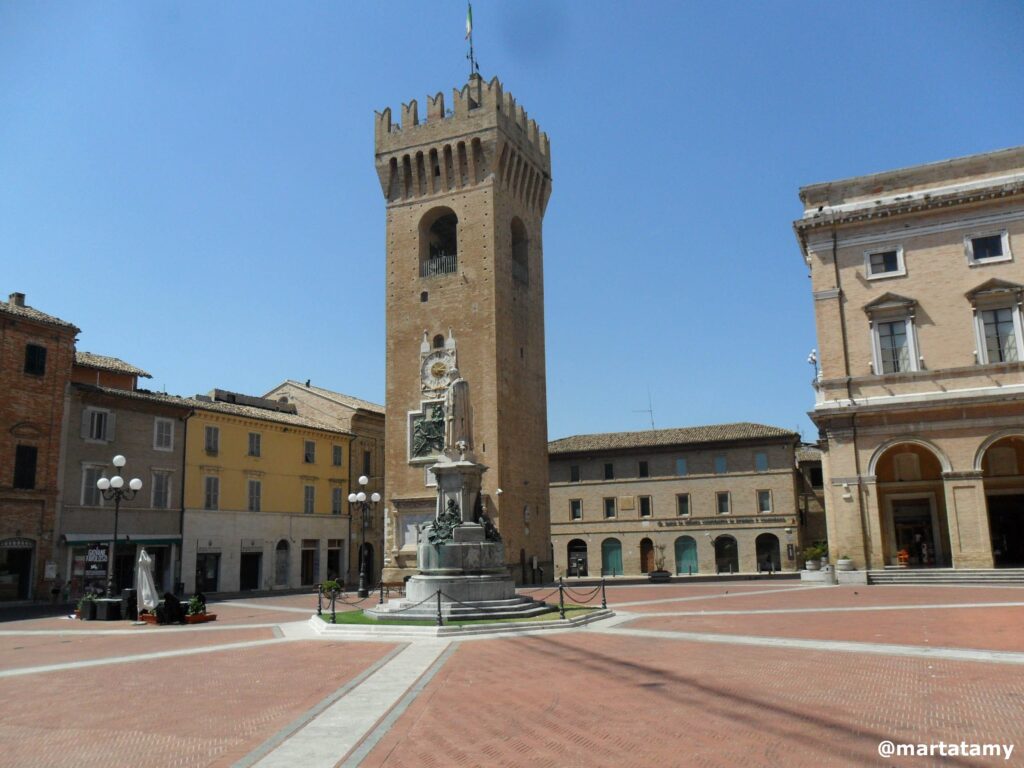
- By: Staff Tibiceco / Senza categoria / 0 Comments
Recanati and the house of Leopardi
He lives in the cult of an excellent poet like Giacomo Leopardi, and in the less remote and perhaps more intimately affectionate memory of the tenor Beniamino Gigli. Recanati has had important moments of history in the Early Middle Ages and in the following centuries: the town was built in the twelfth century because of the need to defend the inhabitants from the raids of the Osimani. It was Frederick II who gave the city the right to build a port (the current Porto Recanati). He knew the struggles between Guelfi and Ghibellini. When the episcopal see was united with that of Loreto in 1952, the importance of the centre quickly waned.
Piazza Leopardi has in the center the monument to the great Giacomo, erected on the centenary of his birth (1898) by Panichi. The Tower of the Village is on the left: it dates back to the twelfth century, it is discreetly preserved and has Ghibelline merlons at its top. The large, imposing Town Hall has a beautiful scenographic effect and on its upper floor you can see the Art Gallery, founded in 1898 and rich in exceptional pieces.
On the square stands also the Church of San Domenico, Romanesque and built in 300. The connoisseur of art things will not miss to visit the Diocesan Museum. Of course a visit to Palazzo Leopardi at n. 5 of Via Antici, more than a cultural event, is a journey of the spirit. The presence of the well-known Center of studies leopardiani next to the Palace of the family: it is equipped with a library and possesses, in microfilm or copy, all the manuscripts of the great recanatese.
GIACOMO LEOPARDI
(POET; born in Recanati on 29 June 1798, died in Naples on 14 June 1837)
Eldest son of the Count Monaldo and Adelaide of the Marquises Antici, he suffered from an early age for the lack of affection on the part of his parents, especially that of his mother, a woman with a stern and bigoted character. Of a very sensitive nature and with an early personality, he showed from an early age a strong love for study, which he was able to partially satisfy in the rich paternal library. At the age of 13 he was already fluent in Latin, Greek and Hebrew, languages which he had learned by himself. During this period, he also translated numerous poems, fables, sermons, tragedies and epigrams. Under the guidance of Giordani, he was directed to the field of philological erudition, even if soon emerged in the young Leopardi a strong literary inclination. Thanks to Giordani, he began to be appreciated even outside the family circle, especially in Milan and Rome. In the meantime, the relentless study began to threaten the health of the young man, but it also enriched his personality as a thinker and poet. Between 1818 and 1820 he wrote the songs “All’Italia”, “Sul monumento di Dante” and “Ad Angelo Mai”. In 1819 he attempted a first escape from Recanati, driven by the climate of incomprehension that had been created with his family. Only later he was able to go to Rome for six months, as a guest of his uncle. His hopes of finding a job became mere illusions and, filled with dismay, he was forced to return to Recanati. Here he began to write the “Zibaldone”, from which arose the first idea of the “moral operettas”, which he wrote in 1824. The following year he goes to Milan, guest and paid by the publisher Stella, and then moves to Bologna. But failing to obtain the coveted state post, he returns again to Recanati, where he feels now a foreigner. In 1827 he went again to Bologna and then, called by the Giordani, to Florence, a city that exerts on him a strong charm and where he meets great personalities, such as Manzoni. In the Florentine period he met and loved, unrequited, Fanny Targioni Tozzetti (Aspasia), one of the many unhappy loves of his life. In 1830 he managed to publish the Canti and it is during this period that he met Antonio Ranieri whose friendship will accompany him for the rest of his life. She went to see him in Naples, in 1833, to recover from the long physical illness that had made the poet’s unhappiness even worse, preventing him from reading and writing. In 1836, Leopardi moved with his friend to a small house on Vesuvius, but after a momentary improvement his physical condition became permanently worse and on 14 June he died, lovingly assisted by his friend and younger sister. He was buried in San Vitale a Fuorigrotta and in 1898 his tomb was declared a national monument. Among the so-called minor works of Leopardi we remember, in addition to the already mentioned Zibaldone, the “Epistolario”, the “Dialoghi”, lyrics and songs, patriotic hymns, as well as the “Paralipomeni alla Batracomiomachia”, on which he worked until the days before his death.




Leave A Comment